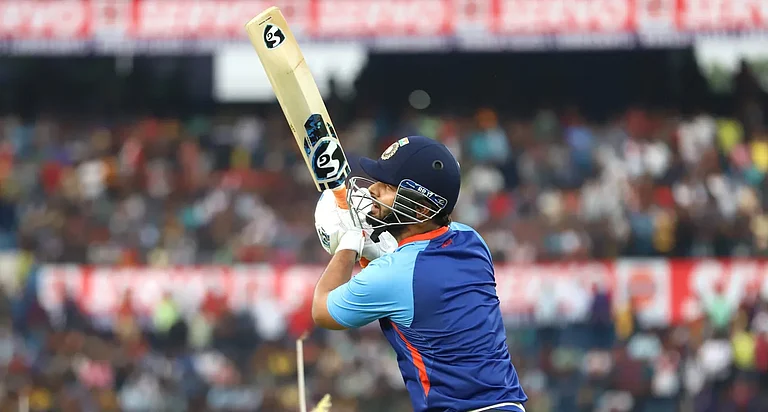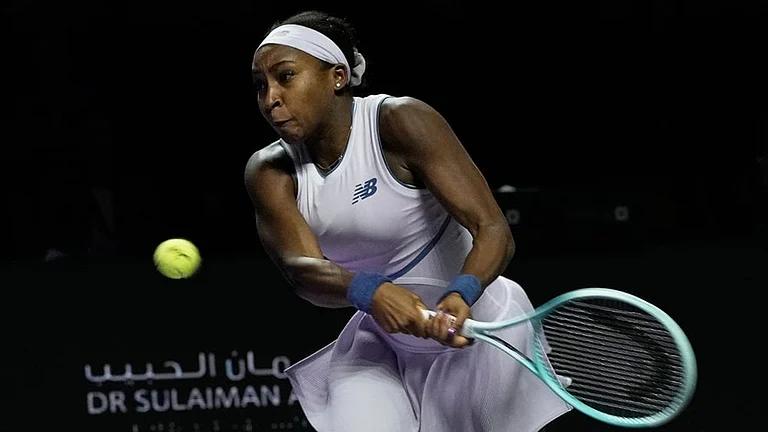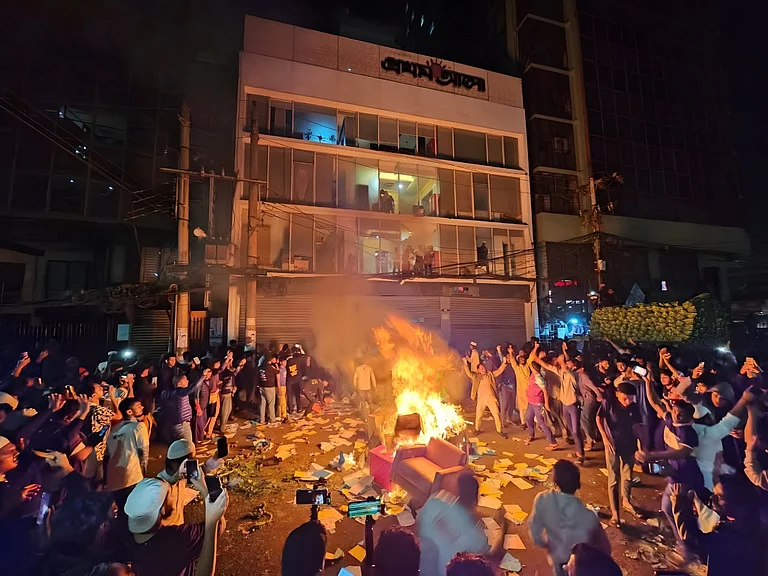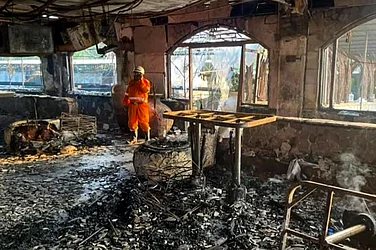As major centres for the arts, adorned by doyennes of Hindustani music, the twin towns of Ayodhya–Faizabad and Hubballi–Dharwad have had multiple glories. If the one had Begum Akhtar, the other was crowned by Gangubai Hangal. But the towns, situated over 1700 km apart, are also connected by a cord that has changed the course of Indian politics. Hubballi’s Idgah Maidan holds a similar place in Karnataka politics as Ayodhya has in north India. If the temple movement firmly situated the BJP in the Hindi heartland, the long-drawn Idgah campaign eventually brought the party to power in Karnataka in 2008.
The thread was revived earlier this month when the Karnataka high court’s decision to allow Ganesh Chaturthi celebrations at the Idgah Maidan came on the day the Supreme Court dismissed contempt proceedings in the Babri Masjid case. The delivery of two seemingly unrelated judgments on a single day was perhaps not a coincidence. The protagonists of the Ayodhya and Hubballi movements were identical —one of whom was Uma Bharti.

In August 2004, the then Madhya Pradesh Chief Minister Uma Bharti resigned from her post and boarded a train to Hubballi, after warrants were issued by a local court against her in an old case when she had defied curfew and tried to hoist the national flag at the Idgah Maidan on August 15, 1994. The 32-hour train journey, full of deliberate delays and detours, reminded one of her earlier avatar, when she gave the famous slogan during the temple movement: “Ram Lalla hum ayenge, mandir wahin banayenge.”
Vishva Hindu Parishad (VHP) Hubballi president Sanjeev Badaskar vividly recalls those tumultuous years. He was an ABVP member, pursuing a bachelors in commerce when Bharti tried to hoist the flag. “Six RSS–BJP members were killed in the subsequent police firing,” he tells Outlook.
The Hubballi saga began in 1992 when BJP leader Murli Manohar Joshi went to Srinagar to hoist the flag at Lal Chowk on January 26. “The BJP–RSS asked their members to hoist the flag at district headquarters all over the country,” Badaskar says. The Sangh Parivar wanted to hoist the flag at Idgah Maidan, but the administration denied permission. “We took it as a challenge,” Badaskar says. Two decades later, the ghosts of Hubballi returned when Badaskar, who also heads the Rani Chennamma Gajanan Utsav Mahamandal, was allowed to erect the Ganesh pandal at the Maidan during the recent festival. The Ganesh celebrations mark yet another addition to a series of events that have polarised the atmosphere ahead of the state elections.

The Idgah land belonged to the Hubballi municipality before a local Muslim organisation, Anjuman-e-Islam (AeI), got a 999-year lease of the land in 1921 and was allowed to hold Eid prayers twice a year. For the remaining part of the year, the Maidan was used for sports, fairs and public meetings. A controversy surfaced when the AeI decided to construct some structures at the Maidan, drawing protests by Sangh Parivar leaders. The matter soon flared up, with senior BJP leaders announcing that they would unfurl the tricolour at the Maidan on Republic Day in 1992. In subsequent years, the BJP upped the ante in Hubballi and tried to hoist the flag at the Maidan on several occasions, as the minor dispute took a communal turn, before the Supreme Court ruled in 2010 that the Maidan was the property of the Hubballi–Dharwad Municipal Corporation, with the AeI authorised to hold prayers only twice a year. But by then Hubballi had offered a solid platform to the Parivar. “The issue hugely strengthened the RSS–BJP in Karnataka,” Badaskar says.
The latest court case in Hubballi also relates to the meaning of the Places of Worship (Special Provisions) Act. After the municipal corporation allowed the celebration of the Ganesh festival at the Idgah, AeI filed a petition before the high court that the municipality was “trying to convert the place of worship”. The municipal corporation argued that since the petitioner does not own the property, it has the right to use the Maidan temporarily.
The high court bench said that the municipality was the absolute owner of the Hubballi Maidan and had the right to allow the festival.
The Places of Worship Act was enacted in 1991 by the Congress government at the Centre when the Ayodhya movement had jolted the country. While its Section 3 prohibits the conversion of any place of worship, Section 4 mandates that the “religious character of a place of worship” as it existed on August 15, 1947 shall remain the same. Within a year of its enactment, the Babri Masjid had been demolished.
The law is now being challenged both in courtrooms and in public discourse. Consider the flare up over the Gyanvapi mosque in Varanasi. Soon after a Varanasi court ordered a survey of the Gyanvapi mosque earlier this year, a Shivling was “found” in the premises, with the VHP immediately calling it the ‘Gyanvapi Mandir’. The VHP contended that the act does not apply in the Gyanvapi case, because the presence of the Shivling confirms that “the bona fide religious character of the basic structure and the place was very much that of a temple in 1947”.
Soon, the Supreme Court subtly created a way to accommodate their claims, when Justice D.Y. Chandrachud said that “the ascertainment of religious character is not barred” under the 1991 Act. Contrast this with the 2019 Supreme Court judgment on the Ayodhya dispute by a five-judge bench that also had Justice Chandrachud, which had underlined that the 1991 Act “protects and secures the fundamental values of the Constitution” and “imposes a non-derogable obligation towards enforcing our commitment to secularism under the Indian Constitution”. The judgment now finds few takers. “The Ayodhya judgment is a standalone judgment and does not impose any such conditions. The Places of Worship Act does not apply to these three temples (Ayodhya, Mathura and Kashi) and other heritage temples. In any case, these temples were destroyed to subjugate Hindus and demolish their centres of faith,” Sheshadri Chari, former editor of the RSS-affiliated journal Organiser, tells Outlook. The battle seems already over. It may soon be “ascertained” that there “is” a temple at the site. The VHP has already stated that “all the people of the country would accept and respect this well substantiated evidence” and “the country would move in the direction of its natural outcome”. Which outcome? “The removal of the Gyanvapi mosque,” say many Sangh Parivar leaders.

Days after Justice Chandrachud’s observations, a Mathura court allowed a suit to remove the Shahi Idgah Masjid adjoining the Krishna Janmabhoomi complex. Significantly, the court also observed that the 1991 Act is not applicable to the Mathura dispute because its Section 4(3)(b) exempts cases that had been “decided, settled or disposed of” before the act came into force. In other words, an old agreement between Shri Krishna Janmasthan Seva Sansthan and Shahi Idgah Management Committee that allowed the co-existence of the mosque and the temple may not hold any worth. “The mosque will have to be demolished,” Rahul Thakur, a young shopkeeper outside the Janmabhoomi complex, told Outlook in February this year. “During the Ayodhya movement, a slogan was raised signifying the return of three temples or else (the Hindus) will wrest three thousand temples that were vandalised. The Muslims do not seem to recognise the resurgent Hindu mood,” says Chari.
But the “Hindu mood” can only partially explain the BJP’s base in Karnataka. Why is Karnataka the only southern state that has brought electoral success to the BJP? What accounts for the BJP’s Karnataka model? Karnataka is the least regional of the four southern states, and has not seen any regional party, with the contest limited to the national parties—be it the various factions of the Janata Dal or the Congress and the BJP. The strong Tamil, Telugu or Malayali sentiment that offers a formidable base to a regional party is absent in Karnataka. Essentially, a multilingual state divided into various zones of Telugu, Konkani and Tamil speaking people, Karnataka could easily offer space to pracharaks who arrived from Nagpur and made their earliest bases in the areas bordering Maharashtra. Long before Hubballi offered a trigger, the Sangh’s work in Karnataka had begun in the early 1940s, as the earliest shakhas can be traced to Chikkodi town of Belgaum district, followed by Mangalore in coastal Karnataka. The first batch of RSS pracharaks who came to Karnataka from Nagpur included Anna Shesh, Gopal Rao Bhakre and Yadav Rao Joshi. Subsequently, Karnataka saw pracharaks from its own shakhas like K. Suryanarayana Rao, H.V. Sheshadri, N. Krishnappa, V.S. Acharya, Dattatreya Hosabale and B.S. Yediyurappa. As the RSS grew in the state, many Parivar outfits also made their ground, including ABVP, Jan Sangh, BMS, Vanavasi Kalyan Ashram and VHP. The Parivar also found ample local support. Mysore Maharaja Jayachamaraja Wodeyar was associated with the VHP, offering it his palace for its national meet.
Coastal Karnataka, with a substantial Muslim population, became an easy ground for the RSS. Among the Sangh leaders who laid the foundation of the BJP in coastal Karnataka was U.K. Rama Bhat, who later became a BJP MLA. In 1968, when the Jan Sangh won a civic body election in Udupi, it perhaps marked the first instance of the party winning an election in south India. “Sangh Parivar has very good organisational strength in Karnataka, compared to other southern states. Almost all cities and villages have branches of RSS and VHP, even Bajrang Dal,” Badaskar says. The groundwork proved handy when Hubballi gave the Parivar a major issue to fight for. And then arrived two pracharaks, Ananth Kumar and Yediyurappa, one Brahmin and another Lingayat, who skilfully engineered the poll mathematics and led the BJP to spectacular success. Lingayats have been the most powerful caste group of Karnataka. Of the 20 chief ministers so far, nine have been Lingayats. While the BJP’s rise coincided with the community shifting its allegiance from the Congress to the BJP, Kumar ensured Brahmins remained loyal to the party. When Yediyurappa formed the first BJP government, many of his ministers were drawn from the Sangh, including Ramachandra Gowda, Acharya, Arvind Limbavali and Shobha Karndlaje.

With a mere four seats in the state Assembly in the 1989 polls, the party jumped to 40 in 1994, 79 in 2004 and finally formed the government in 2008 with 110 assembly seats. The BJP won 18 of the total 28 seats in Karnataka in the 2004 Lok Sabha elections, 19 in 2009, 17 in 2014 and 25 in 2019. Of the total 130 Lak Sabha seats in Karnataka, Andhra Pradesh, Telangana, Kerala, Tamil Nadu and Puducherry, the BJP won only 21 in 2014, with 17 from Karnataka alone. In 2019, Karnataka contributed to 25 of the BJP’s total 29 Lok Sabha seats in the region. With Hubballi again hitting the headlines over a religious issue, the area is tense and the politics volatile. But where would such politics go that rests on the injured Hindu pride? None other than Atal Behari Vajpayee had once emphatically said, “Kashi and Mathura are not on our agenda, they will never be…when we are saying that it’s not on our agenda, you need to trust us…hum Ayodhya ki punaravritti nahin hone denge, yah hum bilkul saaf baat kahna chahte hain (We will not let another Ayodhya happen. We want to state it clearly).”
Despite such assurances, many more Ayodhyas now loom large over India. In November 2015, then BJP chief Amit Shah called the Ram Temple movement the “biggest movement after Independence”. Last December, the VHP’s joint general secretary Surendra Jain stated, “In 1947, India got its political freedom. But through the movement for the Ram Temple, we got our religious and cultural freedom. This was an even bigger movement than the freedom struggle.”
Are these temple movements even reflective of India’s culture? When the word kar seva gained currency in the late 1980s, the concept was alien to most Hindus, even in north India. People were often left wondering about the meaning. Soon after the Babri Masjid was demolished, philosopher Ramchandra Gandhi wrote, which, according to political psychologist Ashis Nandy, “was the most brilliant work I had read on the demolition”. It has a stunning account of various myths and legends, with Sita’s kitchen in Ayodhya at the centre. Gandhi noted that when the injured Hindu pride was “morally bullied and cajoled to perceive a sixteenth century mosque in Ayodhya as the very embodiment of otherness; sheer, indissoluble, otherness”, it marked “Advaita’s Waterloo”. Advaita, arguably the greatest philosophical thought India has given, faced its worst defeat on December 6. Gandhi wouldn’t know that there was more to come.
(This appeared in the print edition as "Irresistible Rise of the BJP in Karnataka")


























